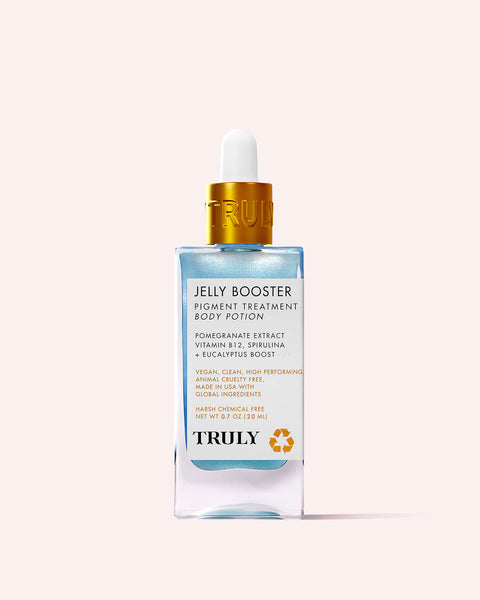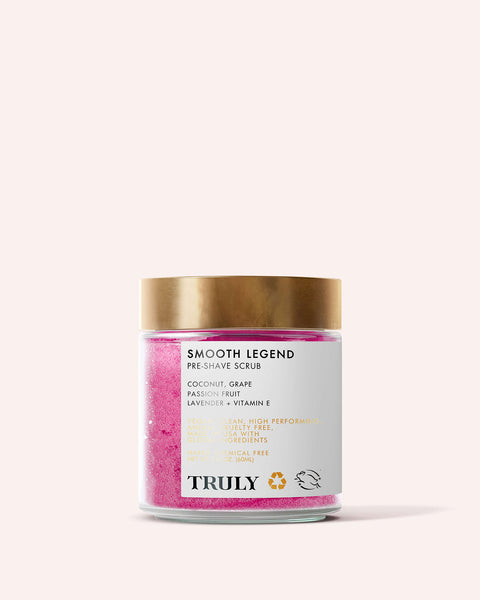7 Reasons to Start Using Mandelic Acid

You might be pretty well-versed in the world of acids, but have you heard about mandelic acid yet? For many years, the likes of glycolic acid, lactic acid, and salicylic acid have received the most attention for their ability to smooth, brighten, and clarify skin. It turns out, mandelic acid might be the latest acid worth adding to your arsenal.
Mandelic acid is an alpha hydroxy acid (AHA) derived from bitter almonds. Like other AHAs, it works by exfoliating away dead skin cells from the skin’s surface to reveal brighter, clearer skin and prevent the formation of breakouts. While it has all the hallmarks of other alpha hydroxy acids, mandelic does have a few key differences.
Here’s everything you need to know about mandelic acid, and why you should start using it in your skincare routine.
#1: Mandelic Acid is Gentle on All Skin Types
One of the best benefits of mandelic acid is that it’s super gentle on the skin, making it an ideal choice for sensitive skin types. It’s a gentler alternative to other AHAs like glycolic acid because of its larger molecules, making it harder to penetrate the skin as deeply or quickly. With mandelic acid, you’re much less likely to experience the redness, dryness and irritation some acids trigger. It’s a great ingredient for beginners looking to ease their way into the world of acids.
Whether you’ve got dry skin, oily skin, or acne-prone skin, all skin types can benefit from this powerful yet delicate ingredient. That said, it can cause adverse effects when overused.
“In darker skin tones, overuse of AHAs can cause the skin to react, leading to post-inflammatory hyperpigmentation, so you end up exacerbating the very problem you’re trying to correct,” says Dija Ayodele, facial aesthetician and founder of the Black Skin Directory.
#2: Mandelic Acid Improves Pigmentation + Melasma
Got dark spots, discoloration, or hyperpigmentation? Look out for skincare products laced with mandelic acid. According to dermatologists, mandelic acid is one of the best AHAs for treating pigmentation, including sun spots from sun damage and post-blemish marks. It may even speed up the healing of acne scars. Studies even show it can improve melasma by up to 50% in only 4 weeks of consistent use.
Like all other AHAs, mandelic acid works by accelerating cell turnover, which helps to improve skin tone and texture.
#3: Mandelic Acid Fades Fine Lines and Wrinkles
If you’re looking for a way to reverse signs of aging, then mandelic acid is your go-to skincare ingredient. Dermatologists and skin experts consider it one of the best anti-aging ingredients out there for restoring skin’s youth.
“As well as increasing cell turnover it helps to remove surface dead skin that can contain fine lines,“ explains Dr. Aikaterini Charakida, Consultant Dermatologist at EF Medispa. “It’s also great at strengthening collagen, which is necessary to support the skin and keep it looking young and firm. Plus, helps to hydrate dehydrated skin.”
By improving skin texture, mandelic acid can help you achieve your smoothest skin — and leave you with a radiant glow!
#4: Mandelic Acid Treats Acne
Mandelic acid boasts antibacterial properties that are extremely helpful in both treating and preventing acne. As it’s oil-soluble, this AHA penetrates the skin’s surface and helps to regulate sebum production, preventing pores from becoming clogged and keeping blackheads and whiteheads at bay. If you have severe acne, combine mandelic acid with salicylic acid (BHA) to effectively treat cystic acne.
You’ll find both mandelic acid + salicylic acid in our Cherry Jelly Body Cleanser. This body wash is designed to zap away bacteria, unclog pores, and keep skin clear. It also features hydrating allantoin, brightening cherries, and soothing niacinamide to nourish and clarify blemish-prone skin.

#5: Mandelic Acid Brightens Skin
Alpha hydroxy acid treatments work to dissolve the accumulation of dead skin cells and oils, revealing fresh, glowing skin underneath. By removing those dull, dead cells, fresh new cells have chance to surface, leaving you with a bright and glowing complexion.
You’ll find mandelic acid in everything from moisturizers to toners and serums designed to illuminate skin. If you’re fed up of dealing with dull skin, rely on mandelic acid products to restore your glowiest skin.
#6: Mandelic Acid Works Fast
According to the pros, you can expect to see initial results from mandelic acid within a few days once cell turnover kicks in. When it begins resurfacing the skin, that’s when the magic happens!
Blemishes can be reduced within 1-2 weeks of consistent use, and dark spots will begin disappearing within 6-8 weeks of using the acid. Stay diligent, use SPF daily, and the results will keep getting better and better.
#7: Mandelic Acid Comes with Minimal Side Effects
Whenever you’re using a new product, whether it be retinol, vitamin C, or chemical peels, it’s always important to do a patch test if you’re especially sensitive. While mandelic acid is considered a safe ingredient, it’s worth taking precautions to prevent irritation — especially if you have sensitive skin or skin conditions.
Always apply sunscreen with SPF 30 or higher after using a mandelic acid serum or cream as this AHA can increase your skin's sensitivity to the sun.
Due to its large molecule size, mandelic acid is generally considered safe with minimal side effects. However, the derms don’t recommend mixing it with other AHAs to prevent irritation. It’s safe to combine it with hyaluronic acid, vitamin C, and retinol.
HOW TO USE MANDELIC ACID IN YOUR SKINCARE ROUTINE
When used in low concentrations, it’s fine to use madelic acid in your daily skincare routine.
“In a 2018 study of 24 participants, mandelic acid twice daily proved the most beneficial amount. I would usually ask my patients to start once daily and, if they are comfortable, build this up to more frequent use,” says Dr. Ahmed El Muntasar.
If you love the effects of acids, but AHAs like glycolic acid tend to leave you red and flaky, try using mandelic acid instead. This gentle AHA works just as effectively — only with a much less likelihood of causing irritation.
























































